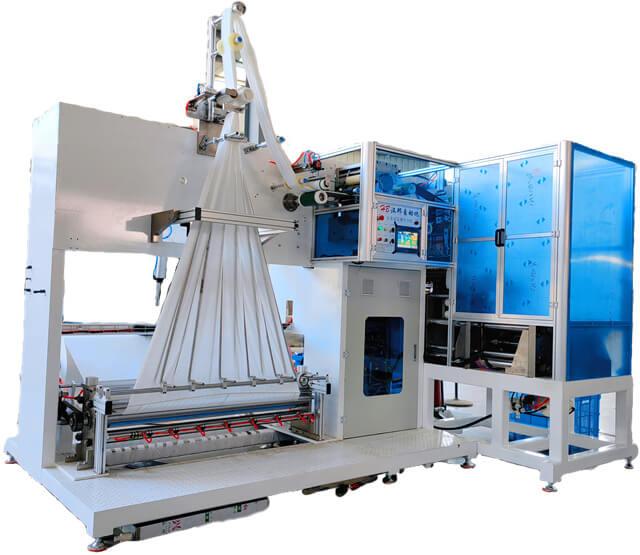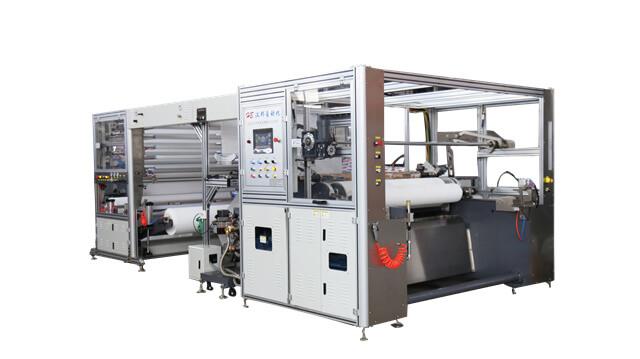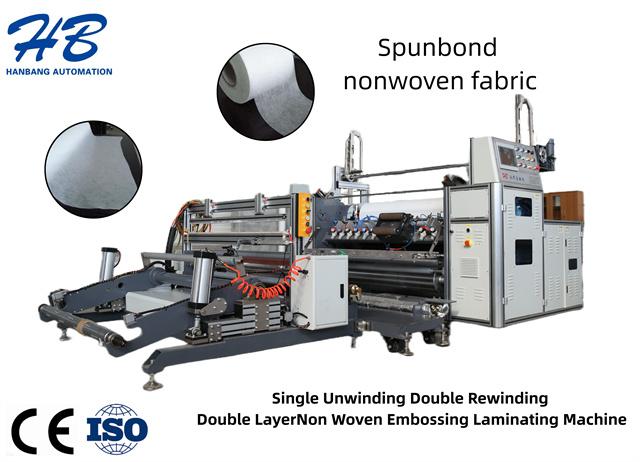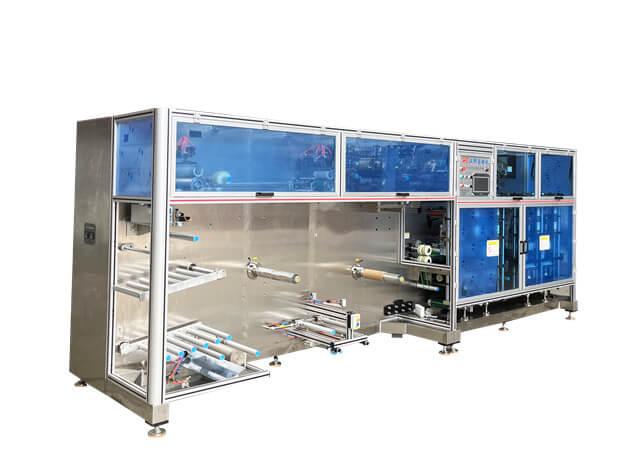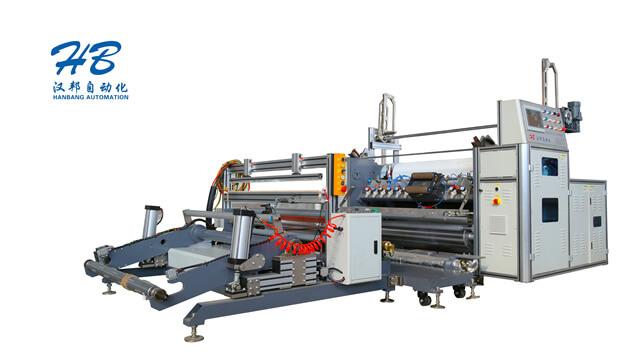Author:HB Nonwoven MachineryFROM:Compressed Towel Machine Manufacturer TIME:2023-12-14
Operating Guide for Non Woven Fabric Roll Cutting Machine
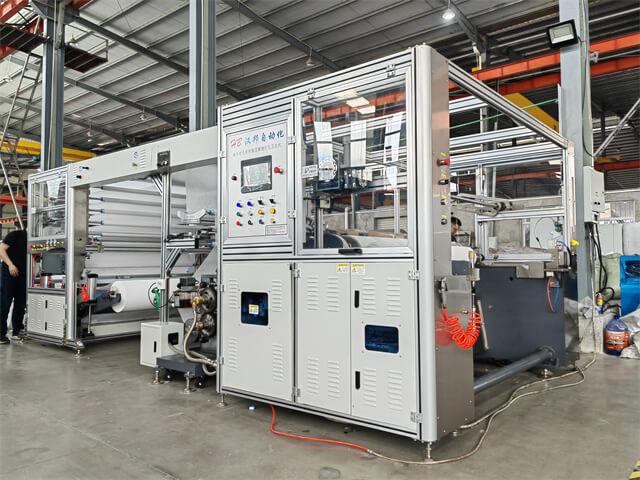
The non woven fabric roll cutting machine plays a crucial role in the production of sanitary products such as diapers and sanitary napkins. This operating guide aims to provide comprehensive instructions on how to effectively operate the machine, ensuring smooth production processes and high-quality output. It covers various aspects of the machine's operation, including safety precautions, machine setup, maintenance, and troubleshooting.
Safety should always be the top priority when operating the non woven fabric roll cutting machine. Operators must wear appropriate protective gear, such as gloves and goggles, to prevent any injuries caused by sharp edges or flying debris. It is essential to familiarize oneself with the machine's emergency stop button and its location in case of any unexpected situations. Additionally, regular safety inspections should be conducted to identify and address any potential hazards.
Before starting the machine, ensure that all necessary components are properly installed and aligned. Adjust the cutting width and length according to the specific requirements of the products being manufactured. It is crucial to maintain consistent tension throughout the process to prevent fabric tearing or slipping. Proper alignment of the cutting blades is essential for clean and accurate cuts. Regularly monitor and adjust the machine's settings as needed.
When loading the fabric rolls onto the machine, ensure that they are correctly positioned and securely fastened. Care should be taken to avoid any damage to the fabric during this process. Similarly, when unloading the finished cut rolls, handle them with care to prevent any unnecessary creasing or tearing. Proper storage and handling techniques should be followed to maintain the fabric's quality.
Start the machine and monitor its operation closely. Regularly inspect the fabric for any defects or irregularities and adjust the machine settings accordingly. Maintain optimum cutting speed for efficient production while ensuring the quality of the cut. Periodically check and clean the cutting blades to remove any accumulated debris. Follow the recommend
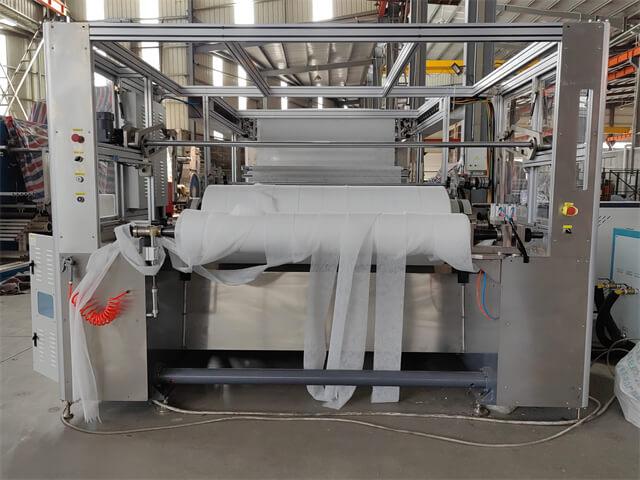
In case of any issues or malfunctions, refer to the machine's troubleshooting guide provided by the manufacturer. Common problems may include jammed fabric, uneven cuts, or abnormal noises. Follow the step-by-step
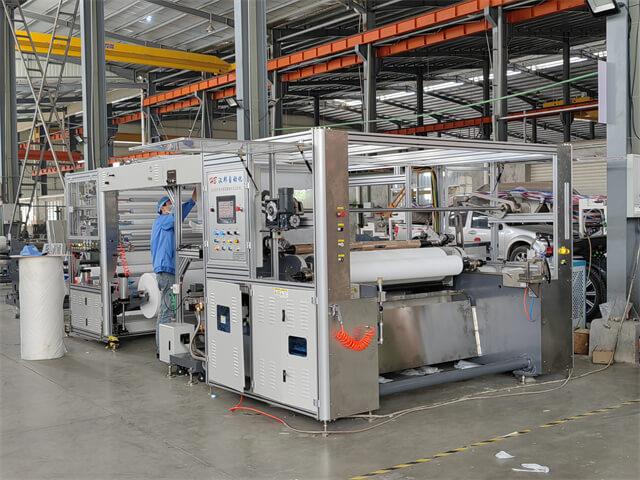
Routine maintenance is vital to ensure the longevity and optimal performance of the non woven fabric roll cutting machine. Follow the manufacturer's guidelines regarding lubrication, cleaning, and inspection of various components. Regularly replace worn-out parts to avoid any disruptions in production. Maintaining a clean working environment and conducting periodic calibration checks will help maintain consistent cutting accuracy.
Proper training is essential for operators to effectively operate the machine. Familiarize yourself with the machine's operation manual and attend training sessions if available. Continuous skill development can enhance productivity and improve overall efficiency. Stay updated with the latest advancements in technology and industry best practices to ensure optimal performance of the machine.
The operating guide for the non woven fabric roll cutting machine provides comprehensive instructions to ensure safe and efficient operation. By following the safety precautions, properly setting up the machine, maintaining it regularly, and troubleshooting any issues, operators can maximize the machine's performance and achieve high-quality output. Continuous training and skill development are crucial for operators to adapt to changing industry demands and improve overall productivity.
